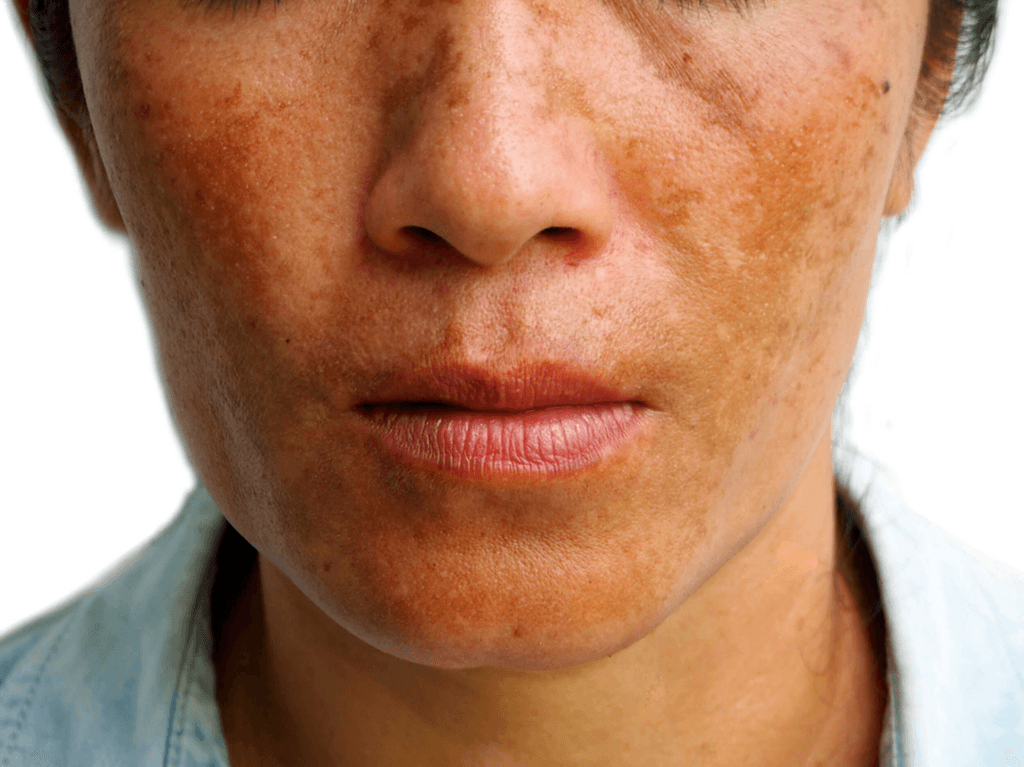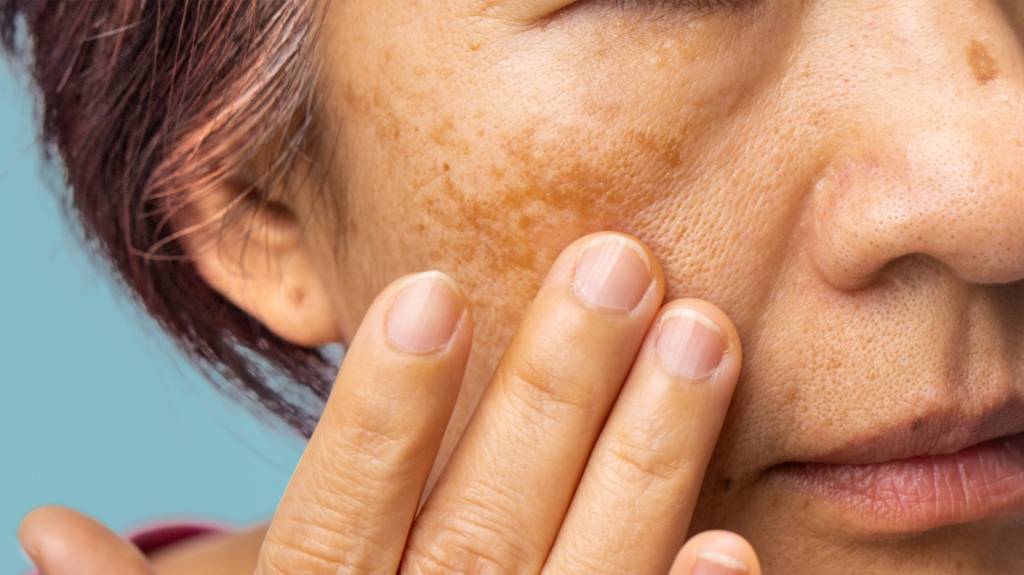Melasma, a common skin condition characterized by brown or grayish-brown patches on the face, particularly the cheeks, forehead, nose, and upper lip, affects millions worldwide. While its exact cause remains elusive, a complex interplay of factors contributes to its development. Understanding these contributing factors is crucial for effective prevention and treatment. This article will explore the main causes of melasma, focusing on sun exposure, hormonal influences, and genetic predisposition.

Understanding Melasma’s Development
Melasma is a hyperpigmentation disorder, meaning it involves an increase in melanin production. Melanin is the pigment responsible for skin color. In melasma, melanocytes, the cells that produce melanin, become overactive, leading to the characteristic discoloration. This overproduction isn’t simply a matter of increased melanin quantity; it also involves changes in the distribution and type of melanin produced. The exact mechanisms driving this increased melanin production are still being researched, but several key factors are known to play a significant role.
The patches of melasma are typically symmetrical and tend to worsen with sun exposure. They often appear gradually and can vary in intensity depending on the individual and contributing factors. While not harmful in itself, melasma can be distressing due to its cosmetic impact. Many individuals seek treatment to reduce the appearance of the hyperpigmentation and improve their confidence.
Understanding the underlying causes of melasma is the first step towards effective management. This involves considering not just one factor but the interplay of several, including genetics, hormones, and environmental triggers. A holistic approach to treatment often yields the best results.
Treatment options for melasma are varied and depend on the severity of the condition and individual response. These options range from topical creams containing hydroquinone, retinoids, or azelaic acid to chemical peels, microdermabrasion, and laser treatments.

The Role of Sun Exposure in Melasma
Ultraviolet (UV) radiation from the sun is a significant trigger and exacerbating factor in melasma. UV exposure stimulates melanocytes, leading to increased melanin production. This heightened activity is a direct response to the skin’s attempt to protect itself from sun damage. The resulting hyperpigmentation is often more pronounced in areas exposed to the sun, such as the face.
Even moderate sun exposure can worsen existing melasma or trigger its onset in susceptible individuals. This is why sun protection is paramount in both preventing and managing melasma. The use of broad-spectrum sunscreen with an SPF of 30 or higher is crucial, even on cloudy days. Seeking shade during peak sun hours and wearing protective clothing, such as hats and long sleeves, further minimizes UV exposure.
The type of UV radiation plays a role. UVA rays penetrate deeper into the skin and are particularly implicated in melasma development. UVA radiation is present even on cloudy days, highlighting the need for consistent sun protection.
The cumulative effect of sun exposure over time is significant. Years of unprotected sun exposure can contribute to the development and worsening of melasma, emphasizing the importance of early and consistent sun protection practices.

Hormonal Influences and Melasma
Fluctuations in hormone levels are strongly associated with melasma. This is why melasma is more common in women, particularly during pregnancy (often referred to as the “mask of pregnancy”) and with the use of hormonal birth control. The hormones estrogen and progesterone are believed to play a key role in stimulating melanocytes and increasing melanin production.
Pregnancy-related melasma typically fades after childbirth, as hormone levels return to normal. However, some women may experience persistent melasma even after pregnancy. Similarly, discontinuing hormonal birth control may lead to a reduction in melasma severity in some individuals.
Conditions like polycystic ovary syndrome (PCOS), which is characterized by hormonal imbalances, are also linked to an increased risk of melasma. The underlying hormonal dysregulation in PCOS may contribute to the overproduction of melanin.
Understanding the hormonal connection is crucial for managing melasma. While hormonal changes cannot always be controlled, managing other contributing factors like sun exposure can significantly impact melasma severity.

Genetic Predisposition and Melasma
Genetic factors play a significant role in an individual’s susceptibility to melasma. Individuals with a family history of melasma are at a higher risk of developing the condition themselves. This suggests that genetic variations may influence melanocyte activity and response to environmental triggers.
Specific genes involved in melanin production and skin pigmentation are likely to contribute to this genetic predisposition. Research is ongoing to identify these specific genes and their influence on melasma development.
While genetics may increase the risk, it doesn’t determine the outcome. Individuals with a genetic predisposition may still avoid or minimize melasma by diligently protecting their skin from sun exposure and managing other contributing factors.
Understanding the genetic component emphasizes the importance of personalized approaches to melasma prevention and treatment. Family history should be considered when assessing an individual’s risk and tailoring treatment strategies.
In conclusion, melasma is a complex condition resulting from the interaction of sun exposure, hormonal influences, and genetic predisposition. While a definitive single cause doesn’t exist, understanding these contributing factors is vital for effective prevention and management. Protecting the skin from sun damage through consistent use of sunscreen and other protective measures is crucial, as is addressing any underlying hormonal imbalances. A comprehensive approach that considers individual risk factors and incorporates appropriate treatment options offers the best chance for managing and minimizing the appearance of melasma.
Discover the expertise of Dr. Ebru Okyay, your trusted dermatologist in Antalya. Whether you’re looking to address medical skin concerns or enhance your natural beauty with cosmetic treatments, Dr. Okyay is here to help. With personalized care and advanced techniques, achieving your skin goals has never been easier.
